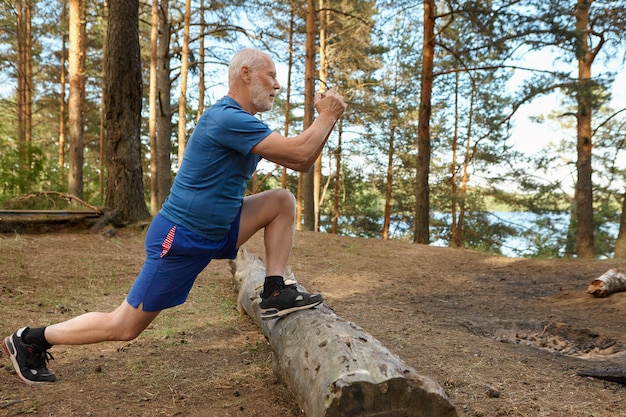Intermittent fasting (IF) has evolved from a trending diet hack to a well-researched lifestyle strategy linked to improved energy, mood, and physical performance. While most associate it with weight loss, emerging evidence shows it can significantly enhance mobility, joint function, and overall physical resilience — especially when practiced consistently and monitored over time.
In this guide, we explore 14 powerful ways intermittent fasting supports better mobility, backed by scientific insights and real-world results. Whether you're managing stiffness, recovering from inactivity, or aiming to stay agile with age, these strategies can help you move better — starting today.
Chronic inflammation is a major contributor to joint pain and reduced mobility. Studies show that intermittent fasting lowers inflammatory markers like CRP and IL-6, which can lead to decreased stiffness and improved joint function over time.

Excess body weight places stress on joints, especially knees and hips. Intermittent fasting helps regulate appetite and supports sustainable fat loss, reducing mechanical load and improving ease of movement.
During fasting windows, the body activates autophagy — a natural cleanup process that removes damaged cells and proteins. This cellular renewal supports muscle and connective tissue health, promoting long-term mobility.
Better insulin sensitivity means more stable blood sugar levels, reducing fatigue and energy crashes that can limit physical activity. Stable energy supports consistent movement and exercise adherence.
Fasting stimulates mitochondrial biogenesis — the creation of new energy-producing units in cells. This leads to improved muscle efficiency and endurance, making daily activities easier and less tiring.

By shifting the body’s fuel source from glucose to fat, intermittent fasting enhances fat burning. This provides a steady energy supply, reducing reliance on quick carbs and minimizing energy dips that affect mobility.
When combined with adequate protein and resistance training, IF helps preserve lean muscle mass during weight loss. Maintaining muscle is critical for strength, balance, and functional mobility.
Emerging research suggests fasting may support synovial fluid production and cartilage regeneration by reducing oxidative stress and improving nutrient delivery during feeding windows.
Better sleep supports tissue repair and reduces inflammation. Many people report improved sleep patterns with IF, especially when eating windows are aligned with circadian rhythms.
A large British study confirmed that intermittent fasting is linked to improved mood and higher energy levels. Better mental well-being increases motivation to stay active and engage in mobility exercises.

With fewer eating windows, people tend to make more intentional food choices. Prioritizing nutrient-dense meals rich in omega-3s, antioxidants, and protein supports joint and muscle health.
Intermittent fasting encourages structure. A predictable schedule supports circadian alignment, which enhances recovery, energy levels, and physical performance — all crucial for mobility.
As energy levels stabilize and motivation increases, many find it easier to incorporate walking, stretching, or strength training — key components of long-term mobility.
Measuring results weekly — such as step count, flexibility, energy levels, or joint comfort — helps maintain consistency. Tracking creates awareness and reinforces positive habits tied to mobility gains.
Begin with a manageable fasting window, like 12:12 (12 hours fasting, 12 hours eating), and gradually progress to 16:8. Choose a method that fits your lifestyle — whether it’s time-restricted eating, alternate-day fasting, or the 5:2 approach.
Stay hydrated, prioritize whole foods, and pair fasting with daily movement. Use a journal or app to log fasting periods, energy levels, and mobility metrics weekly.
Intermittent fasting is more than a weight-loss tool — it’s a holistic strategy that can enhance mobility by improving energy, reducing inflammation, and supporting long-term physical function. By starting small, staying consistent, and measuring progress weekly, you can unlock lasting improvements in how you feel and move every day.

Wellness

Wellness

Wellness

Wellness

Health

Health

Fitness

Wellness

Wellness

Wellness

Fitness

Fitness

Health

Fitness

Health

Health